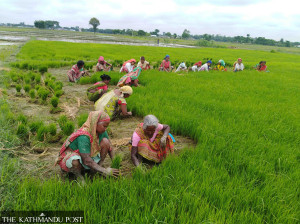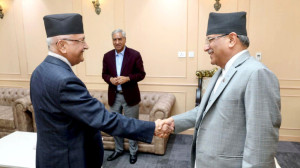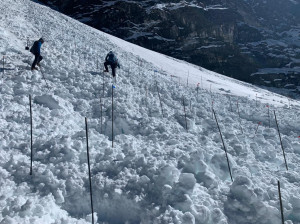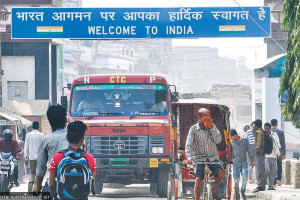 16.12°C Kathmandu
16.12°C KathmanduKoshi Province
No alternative to rainwater in Dhankuta’s Thamdanda
Ever since water sources in the village began to dry up, residents have been reeling under a chronic shortage.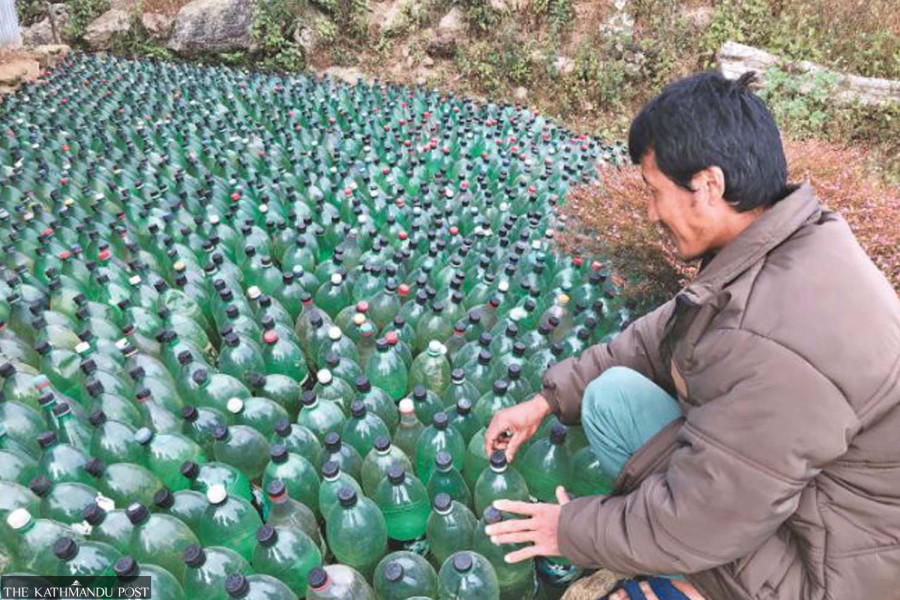
Ramesh Chandra Adhikari
Shanti Rai, a resident of Kerabari Rural Municipality’s ward 1 in Morang, has a family of four. She has been using rainwater for drinking and household purposes for ages now. There is no drinking water supply to the village or any other source of water. As there is no running water supply in her village, the locals rely on collected rainwater to meet their needs.
“After decades of requesting the authorities to connect our village to a supply line, we decided to harvest rainwater, but there are problems with filtration and purification,” Rai said. “We store rainwater in huge tanks and plastic bottles. We collect water during the rainy season from mid-May to mid-September and use that water for eight months.”
According to residents, during the local elections held in May, candidates came to the village soliciting votes with the promise of solving the water problem. But nothing changed. This time, however, no leaders have visited the village. Instead, they often call a few people from the village to their rallies outside.
According to the rural municipality office, there is a chronic shortage of drinking water in around 200 houses in Thamdanda village of Kerabari-1.
According to Pramila Rai, another local, who also has a family of four, they collect rain and dew from their roof and collect that into water tanks and water bottles without any filtration. They collect rain in the rainy season which may seem easy but is more demanding than walking for hours to fetch water from a river. The rainwater collected in the bottles is the main source of water in the village. No matter how many water tanks or water bottles there may be in any person’s house, they always suffer from scarcity because rainwater is just not enough.
When reaching Thamdanda, rare sights can be seen in each house. There is a custom of storing rainwater in thousands of bottles. “It may look unusual for the new visitors. But they feel pity on us after knowing the reality,” said Pramila.
Pramila said that the rural municipality also started the construction of Okharghero Tunibot drinking water project a year ago but it is now caught in a limbo. A year on, no progress is visible. She says not even five percent of the work has been done so far.
The rural municipality admits its failure to resolve the drinking water crisis in Thamdanda. Jitendra Rai, chairman of the local unit, said the drinking water project is left in limbo due to the utter negligence of the contractor.
It has been ten years of struggle for the locals after the nearby water source dried up. There are a few small sources of water in the area but they lie around three hours walk away from the settlement.
“The Okharghero Tunibot drinking water project was meant to collect water from the natural spring and distribute it to more than 200 families in Thamdada village,” Rai, the local unit chair, said. “This project will also provide water to 40 to 50 families of Dhoje settlement in Sagurigadhi Rural Municipality-1, Dhankuta. Efforts are on to supply water in the next year or two.”
Srijan Rai, another local who has a family of five, said that even though the local unit is working on the Okharghero Tunibot drinking water project, it may not be the long term solution. “Water sources in our village have dried up over the past 10 years,” he said. “The source of the under construction water project also may dry up within a few years. The authorities concerned should make plans and projects for a sustainable solution.”
The villagers complain that they are compelled either to buy water or use rainwater. “People suggest to us that the unfiltered rainwater is not safe for drinking,” Rai, the local, said. “But how can we always buy water from water tanks which cost Rs2 per liter?”




.jpg)






